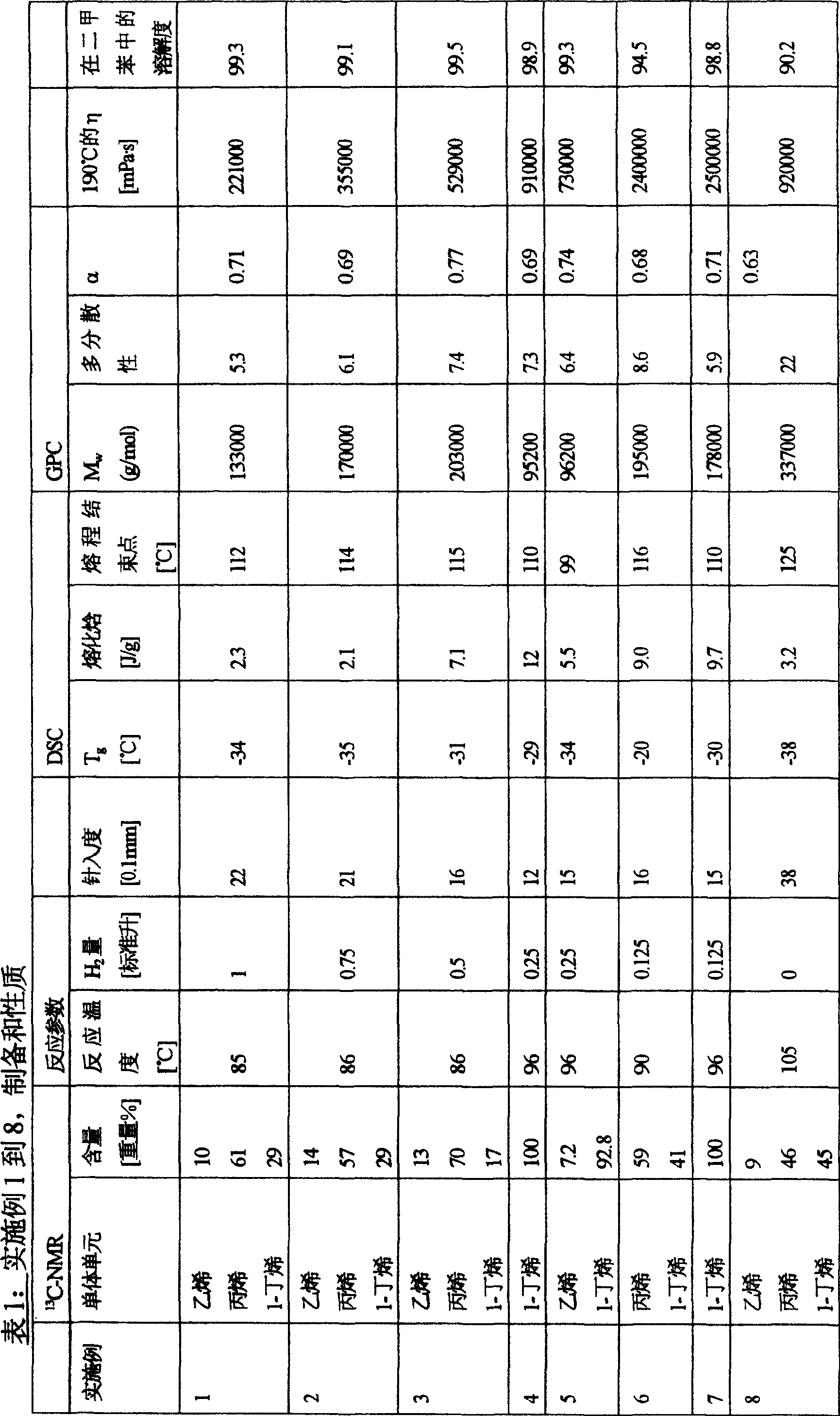Highly viscous, largely amorphous polyolefin
A technology of polyolefin and polypropylene polymer, applied in the field of preparing such polyalpha-olefin, can solve the problems of poor operability, narrow molecular weight distribution, adverse effect of viscosity, etc.
- Summary
- Abstract
- Description
- Claims
- Application Information
AI Technical Summary
Problems solved by technology
Method used
Image
Examples
Embodiment 1 to 8
[0078] Examples 1 to 8: Preparation of polyolefins
[0079] Using TiCl reduced with Al 4 (TiCl 3 0.33AlCl 3 ) form of crystalline titanium trichloride and triisobutylaluminum (weight ratio 1:4) composition of the mixed catalyst, the monomer in n-butane given in Table 1 at the temperature given in Table 1, in The polymerization was carried out in a laboratory autoclave, optionally using hydrogen as molar mass regulator. The pressure is 22 to 25 bar. The monomers ethylene and propylene were metered in continuously over a reaction time of 3 hours; the monomer 1-butene and optionally higher olefins were added first. After 3 hours, the reaction mixture was mixed with isopropanol to terminate the reaction. Unreacted monomers and the solvent n-butane were evaporated in an evaporator. The polyolefin melt exits at a temperature of about 190°C.
[0080] The analytical values of the obtained products are listed in Table 1.
[0081] Measurement method 1 For determining solubi...
Embodiment 9
[0087] Mixtures of Sabic PP520P, isotactic polypropylene and the product from Example 1 in different quantitative ratios were prepared on an ENTEX extruder at 190° C. and a mixing time of 10 minutes. Table 2 gives details and results.
Embodiment 10
[0089] As Example 9; instead of the product from Example 1, the product from Example 2 was used. Table 3 gives details and results.
[0090] As can be seen from Examples 9 and 10, in the scope of mixing a small amount of the polyolefin of the present invention (up to about 30% by weight), compared with the corresponding composition ratio, the elongation at break is obviously improved, and the glass transition point T g Significantly lower. Elongation at break is e.g. related to films, while T g The position of α significantly affects the low temperature impact toughness. The melt flow in this range is surprisingly small, so that this molding compound is well suited for extrusion.
[0091]
[0092]
PUM
| Property | Measurement | Unit |
|---|---|---|
| penetration | aaaaa | aaaaa |
| glass transition temperature | aaaaa | aaaaa |
| softening point | aaaaa | aaaaa |
Abstract
Description
Claims
Application Information
 Login to View More
Login to View More - R&D
- Intellectual Property
- Life Sciences
- Materials
- Tech Scout
- Unparalleled Data Quality
- Higher Quality Content
- 60% Fewer Hallucinations
Browse by: Latest US Patents, China's latest patents, Technical Efficacy Thesaurus, Application Domain, Technology Topic, Popular Technical Reports.
© 2025 PatSnap. All rights reserved.Legal|Privacy policy|Modern Slavery Act Transparency Statement|Sitemap|About US| Contact US: help@patsnap.com



